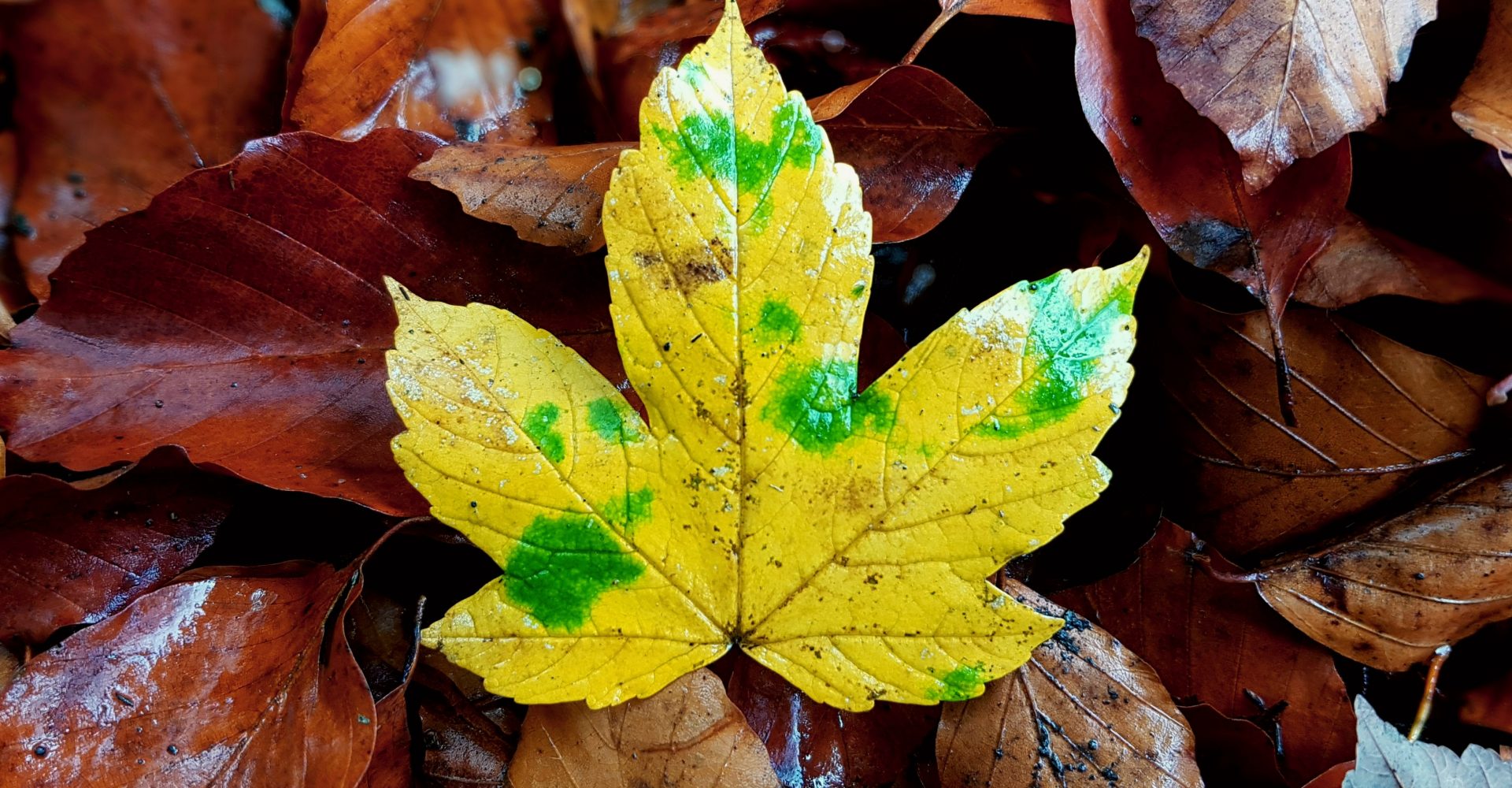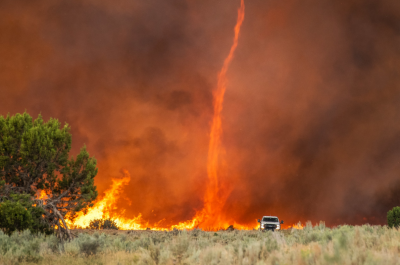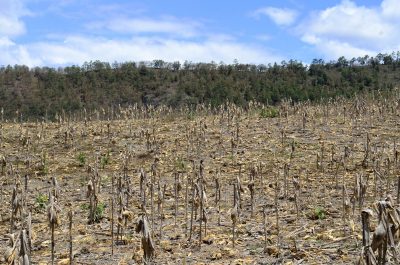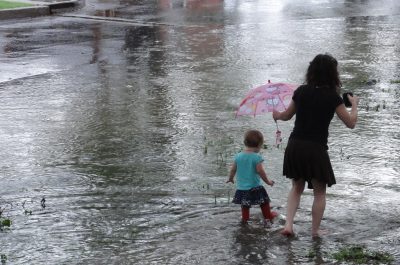At Brenda Whittaker’s home in Guelph, Ontario, the usually vibrant red and orange colors of her maple trees seemed dull this fall. Born and raised in Guelph, she has watched autumn change for 62 years. Whittaker wonders if warmer temperatures during the past few months are to blame for the faded color.
“This is an odd year,” she said.
In Blacksburg, Virginia, Glenna Gustafson found tropical elephant ear plants growing strong in early October. “We had a very mild fall here,” she said by phone in mid-November “Actually, the trees didn’t even become colorful until about a week ago.”
Meanwhile, Thomas Gibbons was downright shocked when leaves simply seemed to skip autumn all together.
Whittaker, Gustafon, and Gibbons were in sync with ISeeChangers across the U.S. and Canada this year, who noticed four ways that fall is weird this year:
It’s warm. Leaves look strange. Plants are still growing. Bugs are thriving.
Each trend aligns with what climate modelers say is the new normal. Here’s how:
1. It’s warmer this year. Why ?
According to the National Oceanic and Atmospheric Administration, the upper Midwest, New England, and parts of the Pacific Northwest and New Mexico experienced average September temperatures between 3 and 9°F above normal. In October, most of New England saw record-breaking warm temperatures.
At her home in Macedon, New York, Anna Schinsing recorded temperatures in the 80s and 90s in mid-October.
Warm temperatures also took over the West, where temperatures soared above 100°F in Los Angeles on October 24.
AccuWeather Meteorologist Paul Pastelok said that one reason for the warm fall temperatures, in eastern states was that ocean surface temperatures off the coast have been above normal since mid-summer (Stay tuned to ISeeChange for more on that soon).
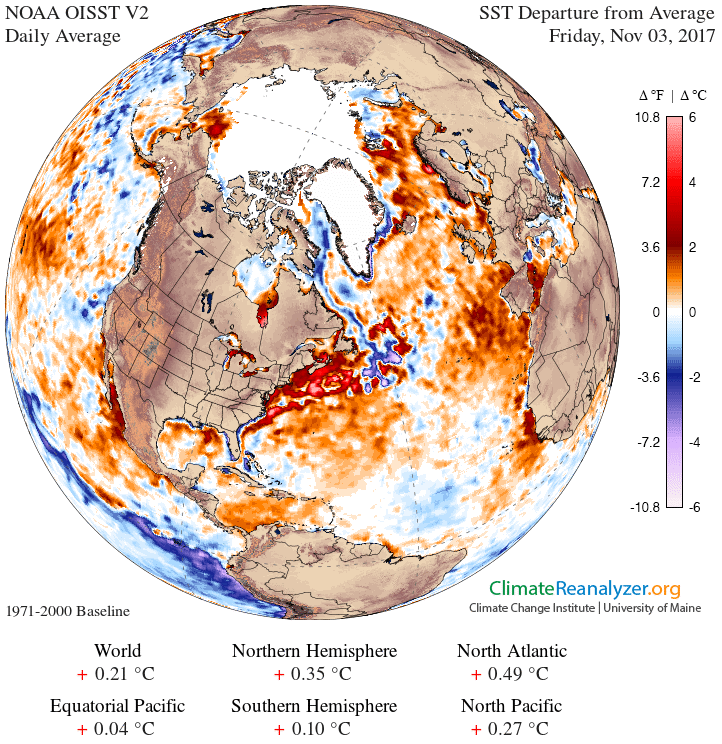
Climate models suggest that warmer autumns like these are here to stay. By the end of the century, the National Climate Assessment predicts that much of the U.S. will have 40 or more fewer days where the low temperature dips below freezing.
2.What happened to the fall leaves?
Due in part to warmer temperatures, residents in the Northeast noticed strange things happening in their forest canopies.
In Windham, Connecticut, Judy Donnelly said that she hardly saw any vibrant red leaves this fall. Similarly, in Rochester, New York, Edward Graham noticed his oak trees changing color very late in the season.
Weird leaf happenings weren’t confined to the Northeast. In western Ohio, Kendall Monnin noticed the trees in her area started to change in early October, much later than she’s used to.
Researchers at the University of Connecticut found that leaves change color later when autumn temperatures are warm or trees have been drought stressed during the growing season. They combined these findings with climate models, predicting that as the climate changes, trees in southern and coastal New England, where Donnelly lives, might change earlier than usual.
3. How did my plants live so long?
Another symptom of warmer falls is a longer growing season. As Gustafson noticed in Virginia, annual plants that die after the first frost were still growing late into fall. “Seeing these plants so late in the season is unusual,” she said.
This large elephant ear plant (tropical) looking very healthy in the fall mountains of Virginia.
In Nashville, Tennessee, Emily Austen spotted a violet blooming on an 80-degree November day. Wild violets typically bloom in spring and some varieties sneak in a second bloom in the fall months.
While most annual plants, like the elephant ear that Gustafson spotted, will live only until the first frost, many perennial plants will live and bloom until the first hard-freeze of fall. Back in Windham, Connecticut, Donnelly said the first freeze didn’t arrive until November 10 this year.
“I remember as a kid, I used to play in the marching band,” she said. “And I would be walking through frosty fields to get to the high school, freezing cold, in mid-November. It definitely has gotten warmer.”
The National Climate Assessment projects that warmer, later winters will bring longer growing seasons and changes in plant hardiness zones across the U.S. That means plants that previously couldn’t survive the winter in certain areas may begin to live all year long.
The trend toward longer growing seasons is already showing up in data. Ken Kunkle, a meteorologist at the National Oceanic and Atmospheric Administration, and the Associated Press teamed up to analyze first-frost data. “The average first freeze over the last 10 years, from 2007 to 2016, is a week later than the average from 1971 to 1980,” the report says.
4. Where did all these bugs come from?
In Donnelly’s yard, insects were bountiful this fall. In September, she had more bumble bees and yellow jackets than she’d ever seen before.
“I had the most amazing nasturtiums I’d ever seen. The raspberries were a foot taller than usual and really thick, and so both of them were absolutely full of bumble bees,” she said. “I’ve never seen so many.”
She also noticed a few new insects in her garden. Right before it was time to pick her soybeans, she noticed they’d all been eaten –likely, she thinks, by soy pod worms. She also found squash beetles in early September. “I don’t remember ever seeing them before,” she said.
Nearby, Matylda Biskupski heard crickets later into the season than normal.
The longer insect season occurs for similar reasons to the longer growing season. Some insects die off when it gets cold, while others hibernate. So if falls are warmer, insects can be active for longer. According to the USDA, “Higher temperatures can also play a role in insect population success and potential range expansion.”
Similarly, the National Climate Assessment predicts that higher winter temperatures will allow agricultural pests to live year-round.
Tell us what you’re seeing
From bugs to leaves, people across the U.S. noticed climate change on their doorstep this fall. As winter approaches, we want to know what weird seasonal shifts you’re seeing. Tell us on ISeeChange when you get your first freeze, your first snowfall and whenever the weather’s acting strangely. Login and join the conversations.
Story by Samantha Harrington for ISeeChange in Partnership with Yale Climate Connections
Cover art by “cocoparisienne“/Pixabay and Creative Commons

